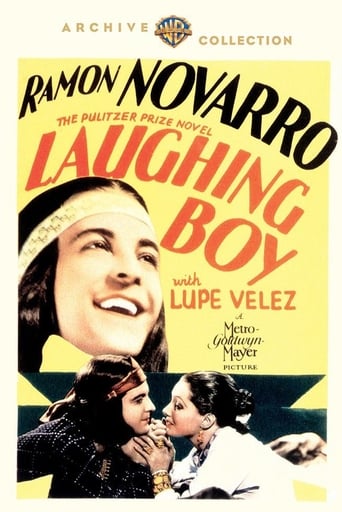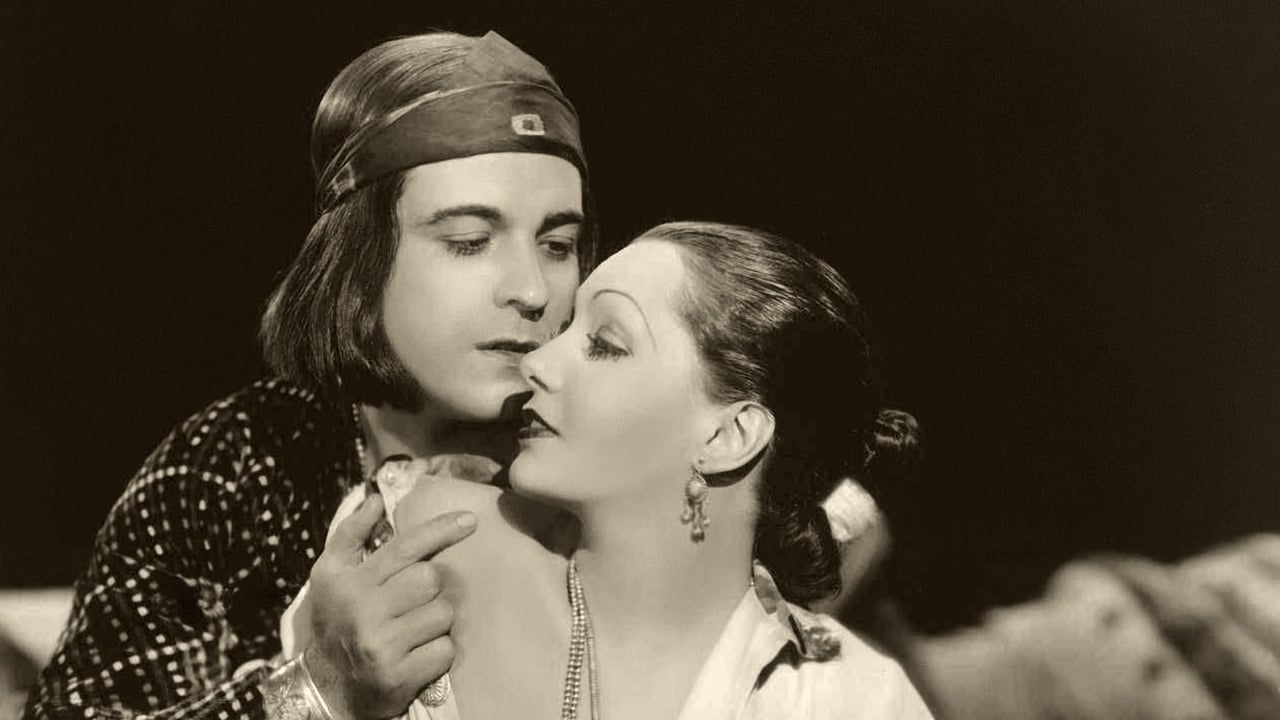JLRVancouver
"Laughing Boy" is a film version of Oliver La Farge's Pulitzer Prize winning novel about a young Navajo man in the early 1900's. Briefly, the story follows Laughing Boy (Ramón Novarro), a traditional youth who travels to a ceremonial dance where he meets Slim Girl (Lupe Vélez), a young women who had attended an "American school" and now lived amongst the white men. After initially disliking her forward ways, Laughing Boy falls in love and, despite objections from his family, the two marry. Slim Girl finds the life as a traditional Navajo women gruelling and starts to return to the 'white' town, ostensibly to sell Laughing Boy's silver-work, where she becomes involved with her former lover. The tragic ending is somewhat abrupt and very different from that in the book. La Farge was an anthropologist who had worked with Navajo and the book, and by extension the movie, are considered accurate and respectful descriptions of Native American life in the Southwest in the early part of the century. The movie lacks much of the detail and 'flavour' of the book, but remains a touching story of love and community in a time when traditional values were slowly being eroded by the temptations of 'modern' lifestyles (like whiskey). The cast includes a number of American Indians in important secondary roles but the leads were both Mexican and don't really look the part, especially when interacting with the indigenous actors (although in the case of Vélez's character, this may be intentional, as she is now 'an outsider'). Music plays a large part in the book but Novarro's singing seems out of place in the film. He has a very good voice but (IMO) the songs would have been better if sung in Navajo (or wordlessly) and without any accompaniment. The black-and-white desert cinematography is moody and beautiful, although many of the back-projection shots (such as the horse racing scenes) are unconvincing and the wrestling scene has been oddly 'sped up'. The movie was a box-office failure and has not aged well (Novarro still looks like a character from a 'silent'), but I found it the story affecting and the scenes of contemporary Navajo life interesting. I would recommend reading the book first.
channinglylethomson
I finished watching the film last night. It's REALLY interesting. The original novel by Oliver LaFarge won the Pulitzer Prize in 1929. He was a Harvard anthropologist who made several trips to Arizona to study the Navajos and actually learned their language and was one of the ones who created a system of writing it. The film is very interesting -- taking place in the 1910s, it's about a young girl (Slim Girl) who has left the tribe and become the kept woman of a white rancher in town. She fall is in love with Laughing Boy -- a traditional Navajo cattle herder who marries her. She doesn't fit in with Indian tradition and the "white man" treats her like a prostitute -- she's been raised in White-run Indian schools so she's torn between two culture and demeaned by both. The film definitely has a pre-Hays code sensibility because there's some premarital sex, adultery, alcohol abuse, miscegenation, a kept woman -- the film is more a study of Slim Girl than of Laughing Boy. It's really quite amazing that MGM ever made this film! The unfortunate aspect of it is the acting and casting of Ramon Novarro and Lupe Velez. The two Latin spitfires are just all wrong for the characters although Novarro is very sweet in the role.
bkoganbing
In viewing Laughing Boy today I counted elements of Camille, Romeo and Juliet and Duel in the Sun in the plot of this Indian love story.Ramon Novarro plays the title role and he's a Navajo from way off in the rural part of the reservation. Lupe Velez is also a Navajo, but an orphan who is the live in mistress of William B. Davidson. It's doomed from the start. Lupe's been living too long in the white man's world and Ramon's family simply will not accept her. It ends bad for both of them.I've got a mixed reaction to the film. I've got to give some credit to MGM at that time for even attempting to make a film showing Indians as three dimensional people. They do in fact include some stereotypes, but give the studio credit for trying.Both Lupe and Ramon were big stars in the silent era and did make the transition to sound. They both had pleasant speaking voices. But both led lives that given the times should have been more discreet. They were both descending into B films at a steady pace. In Ramon's case the vogue for Latin lovers which crested with Rudolph Valentino in the silent era with Ramon as one of his imitators had long passed. MGM had trouble casting him. Laughing Boy might have been a better film if MGM had been trying to build Lupe and Ramon up instead of looking to be rid of both.
Ron Oliver
LAUGHING BOY loves Slim Girl, but she has lived too long among the white man and cannot fit in with her new husband's traditional Navajo family. What will happen when he discovers she has returned to being a prostitute to make them some extra money?Ramon Novarro & Lupe Velez do the best they can with somewhat embarrassing material. Their performances alone elevate the film above the mundane.Director W. S. Van Dyke, known for his vivid on-location films, tries to interject footage shot in the Southwest to lend authenticity to the plot, but the rear projection backgrounds only detract and annoy the viewer.


 AD
AD



